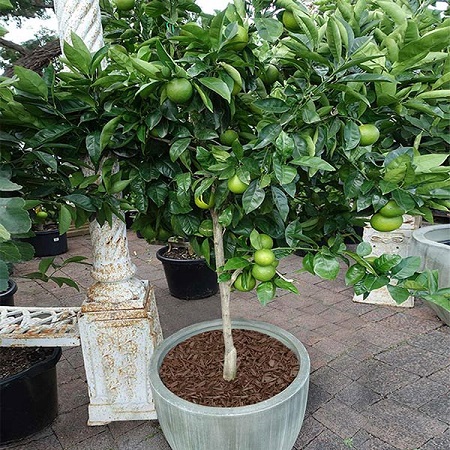
Imagine stepping into your own oasis of tangy freshness and vibrant greenery by cultivating a lime tree right in your home or greenhouse. Lime trees not only offer delicious, zesty fruits but also add a touch of natural beauty to your surroundings. With a little know-how and care, you can successfully grow a lime tree, even if you don’t have a large outdoor space. This article provides a comprehensive guide on how to grow and care for lime trees indoors, along with insights into the best lime tree varieties to consider.
Selecting the Right Lime Tree Varieties
Before diving into the cultivation process, it’s essential to choose the right lime tree variety that suits your preferences and growing environment. Some popular lime tree varieties suitable for indoor or greenhouse cultivation include:
Key Lime (Citrus aurantiifolia): Known for its small, round, and highly aromatic fruits, the Key Lime is a classic choice for indoor cultivation. It thrives in containers and can adapt well to various lighting conditions.
Persian Lime (Citrus × latifolia): This variety produces larger, seedless fruits and is a bit less acidic than Key Limes. Persian Limes are excellent for both culinary use and ornamental value.
Kaffir Lime (Citrus hystrix): Recognizable by its distinctive double-lobed leaves, Kaffir Lime is prized for its aromatic leaves and zesty fruits. It can add a unique touch to your indoor garden.
Creating the Right Growing Environment
Lime trees require specific conditions to thrive indoors or in a greenhouse. Here’s how to create an optimal growing environment:
Light: Lime trees thrive in bright, indirect sunlight. Place your tree near a south or west-facing window to ensure it receives ample light throughout the day. Consider using artificial grow lights if natural light is limited.
Temperature: Lime trees prefer temperatures between 60°F to 80°F. Avoid exposing them to drafts or extreme temperature fluctuations.
Humidity: Lime trees enjoy higher humidity levels. Mist the leaves regularly or place a tray of water near the tree to maintain humidity.
Potting Soil: Use a well-draining, slightly acidic potting mix enriched with organic matter. A mix designed for citrus trees works best.
Container: Choose a spacious container with good drainage holes to accommodate root growth. As your tree grows, you may need to repot it into a larger container.
Planting and Care Instructions
Planting: When planting your lime tree, ensure it’s at the same depth as it was in its previous container. Gently loosen the root ball before placing it in the new pot. Fill with potting mix and water thoroughly.
Watering: Keep the soil consistently moist but not waterlogged. Water the tree when the top inch of soil feels dry to the touch. During the growing season, increase watering frequency.
Fertilization: Feed your lime tree with a balanced, water-soluble fertilizer formulated for citrus trees. Apply during the growing season (spring and summer) according to package instructions.
Pruning: Regularly prune your lime tree to maintain its shape, improve air circulation, and remove any dead or diseased branches. Pruning can also encourage new growth and fruit production.
Pest and Disease Control: Keep an eye out for common pests like aphids, mealybugs, and scale insects. Treat with insecticidal soap or neem oil if needed. Good air circulation and proper care can help prevent many diseases.
Pollination: If growing indoors, you may need to manually pollinate the flowers using a small brush to transfer pollen from one flower to another, promoting fruit development.
Harvesting Your Limes
With patience and care, your lime tree will reward you with a bountiful harvest. Limes are usually ready for harvest when they reach their mature color (typically green or yellow) and release a strong citrus aroma. Gently twist the fruit off the branch to avoid damaging the tree.
Conclusion
Growing a lime tree in your home or greenhouse can be a rewarding experience that brings both beauty and delicious fruits into your living space. By selecting the right variety, providing optimal growing conditions, and following proper care instructions, you can successfully cultivate a thriving lime tree that adds a touch of freshness to your surroundings and your culinary endeavors.
Related Articles & Free Email Newsletter Sign Up
How to Grow Bananas in a Greenhouse
How to Grow Pineapple in a Greenhouse
The Fascinating World of Finger Lime Plants: Growing and Cultivating this Unique Citrus Gem



Comment here